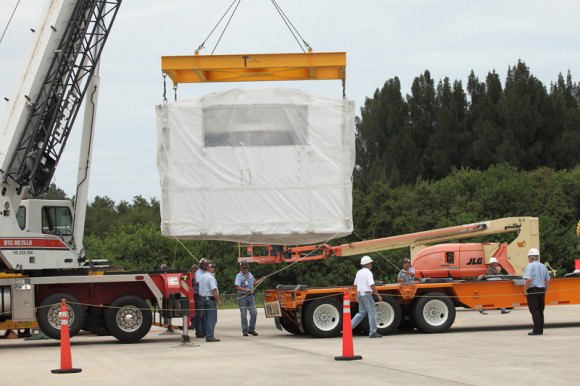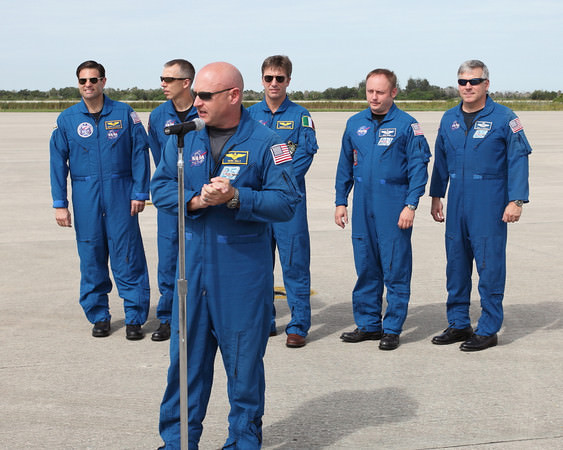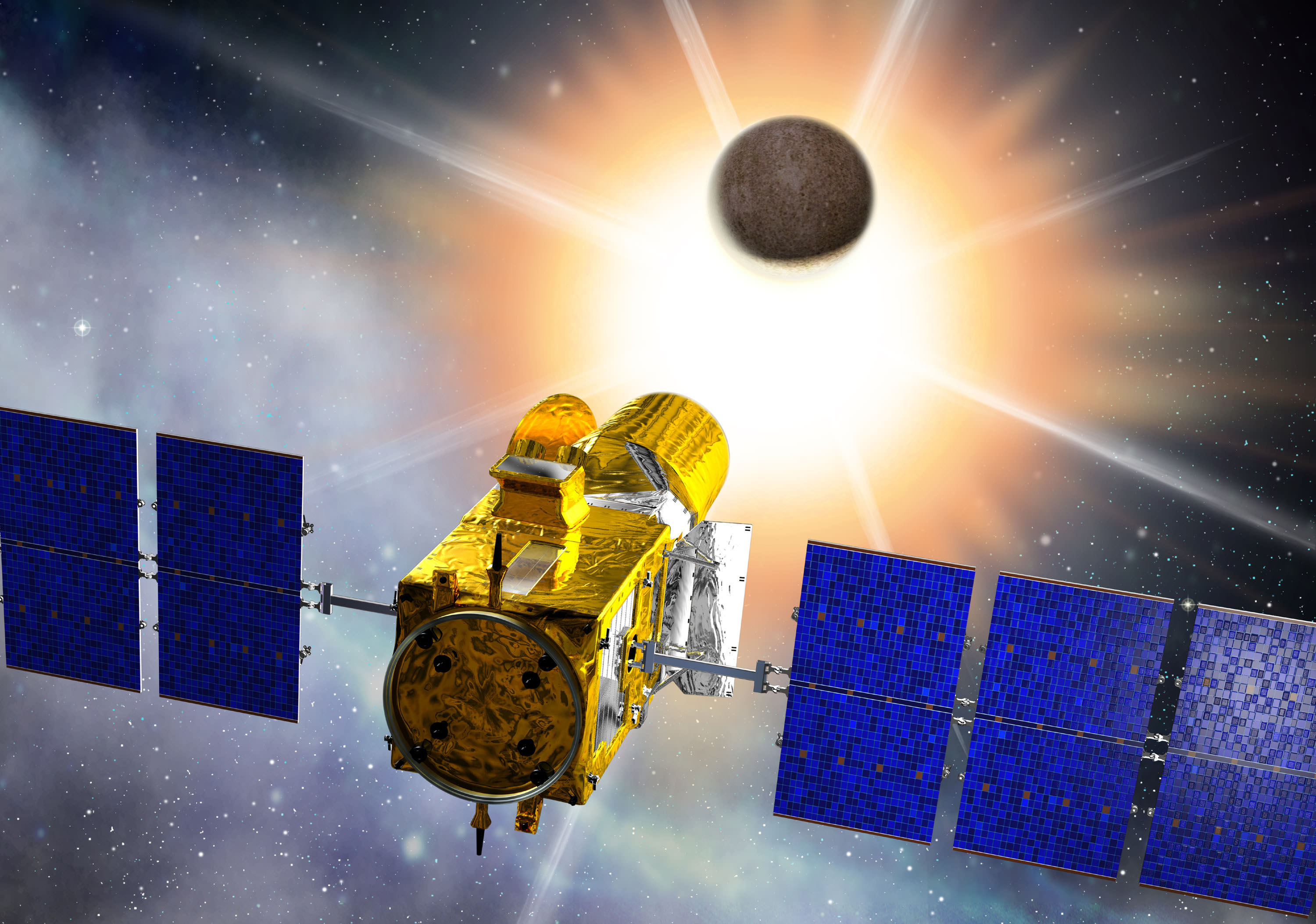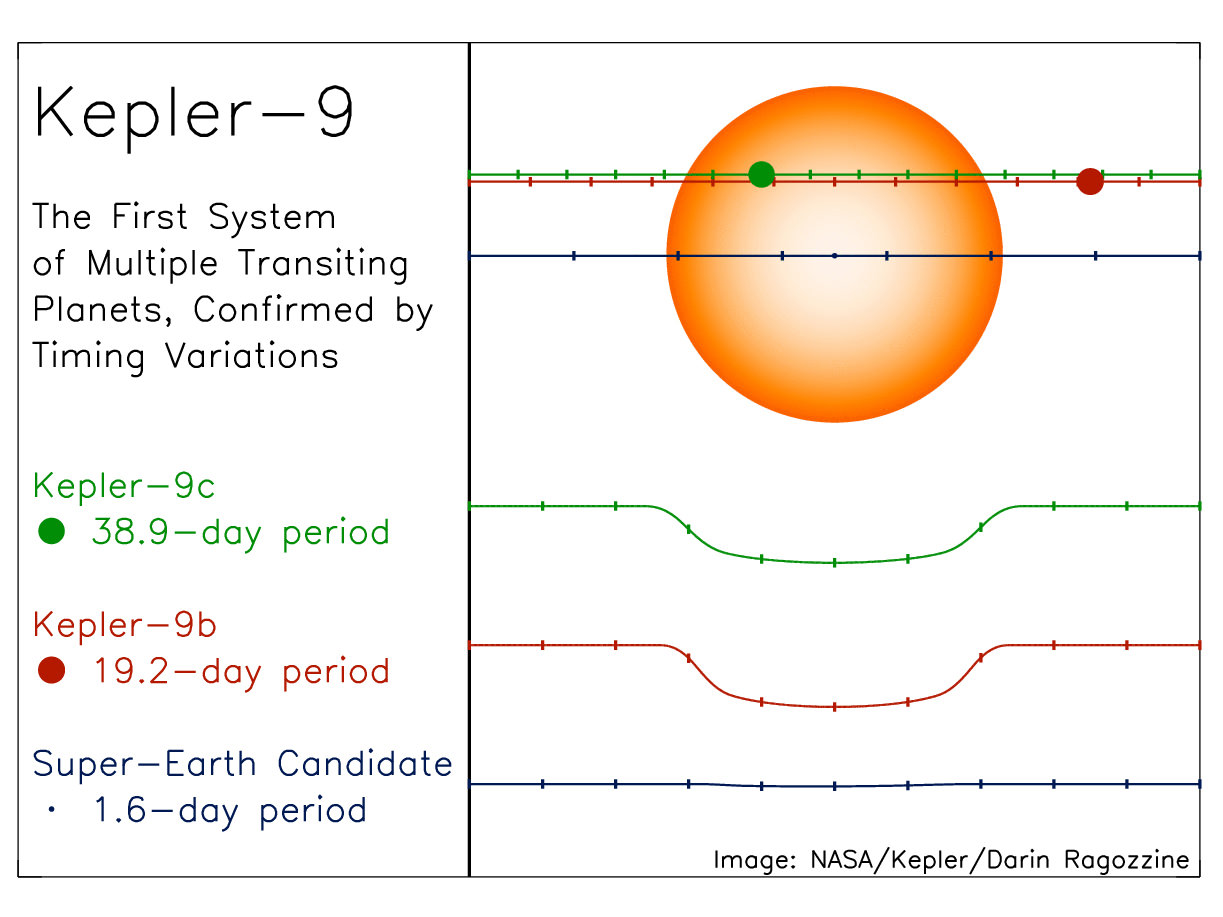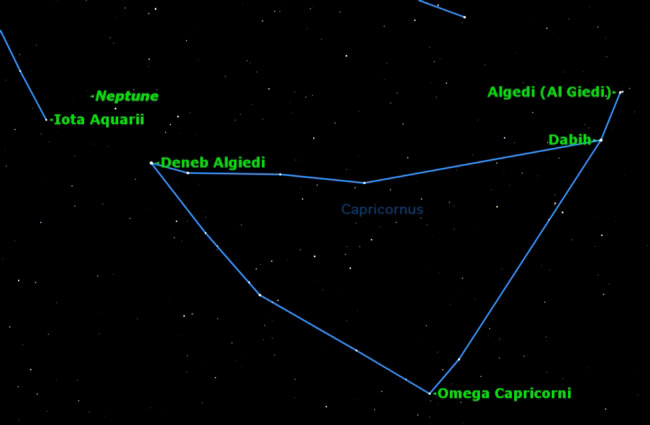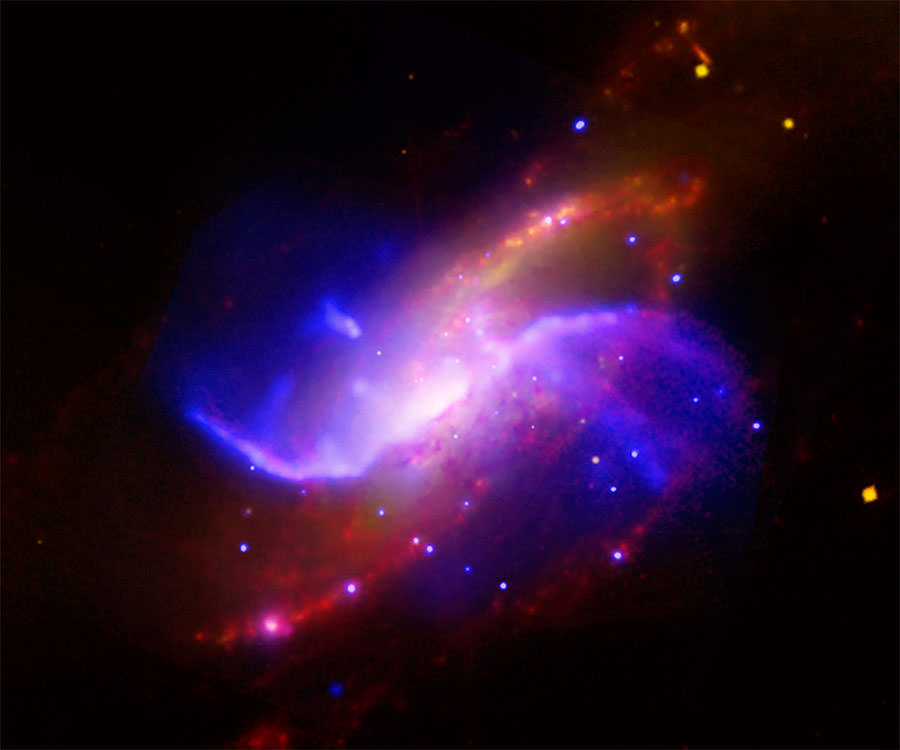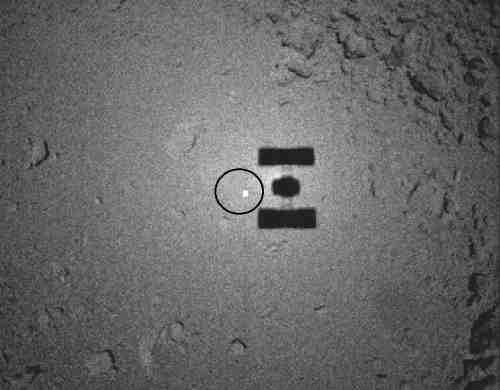[/caption]
The Kepler mission has discovered a system of two Saturn size planets with perhaps a third planet that is only 1.5 times the radius of Earth. While the news of this discovery is tempered somewhat with the announcement by a team from the European Southern Observatory of a system with five confirmed Neptune-sized planets and perhaps two additional smaller planets, both discoveries highlight that the spacecraft and techniques astronomers are using to find exoplanets are getting the desired results, and excitingly exoplanet reseach now includes the study of multiplanet systems. This discovery is the first time multiple planets were found by looking at transit time variations, which can provide more information about planets, such as their masses.
“What is particularly special about this system, is that the variations in transit times are large enough, that we can use these transit timing to detect the masses of these bodies” said Matthew Holman, Kepler team lead for the study of star Kepler-9, speaking on the AAAS Science podcast. Additionally, these findings should provide the tools astronomers need to determine even more physical conditions of these planets — and others — in the future.
The inner world weighs in at 0.25 Jupiter mass (80 Earths) while the outer world is a slimmer 0.17 Jupiter mass (54 Earths).
The team analyzed seven months of data from the orbiting Kepler telescope, and the two large confirmed planets—Kepler-9b and Kepler-9c— are transiting the parent star at unstable rates. The planets’ 19.2- and 38.9-day transition periods are increasing and decreasing at average, respective rates of four and 39 minutes per orbit.
“One thing that caught our attention right off, is when we do preliminary estimates at the time of the transit, we saw large variations in this particular system. Not only did we see more than one planet transiting, but one planet seemed to be speeding up and one slowing down,” Holman said.
Because period one is roughly twice the other, they have a signature of what is called a 2:1 orbital resonance, where astronomers expect to see large timing variation, due to the orbital gravitational push and pull the systems has on all the objects.
“The variation in transit times depend upon the masses of the planets,” Holman told reporters in a news conference announcing the findings. “The larger the mass the larger the variations. These variations allows us to determine the mass of the objects and we can confirm that they are planets.”
The team also confirmed the objects were planets with radial velocity observations with the Keck I telescope.
The third planet, with a mass several times that of the Earth, is transiting the star in a more interior orbit, but further analysis will be necessary to confirm that this signature is actually a planet.
“We are being very careful at this point to only call it a planet candidate, rather than a confirmed planet,” Holman said. “If it is confirmed it would only have a radius of about 1.5 that of Earth’s. It has a much shorter orbital period of 1.6 days, so it is very close to its host star, so we should be able to see evidence of many transits.”
Holman added that this discovery — regardless of whether they are able to confirm that this is a planet or not — highlights the sensitivity of Kepler to very small signatures.
Holman said the planets have probably migrated to be closer to the star from where they started out when they formed. “Likely they formed with the star, but likely they formed farther out at the “snow line” several times farther away from the star than the Earth is, and by a dynamical process move in closer,” he said in the Science podcast.
The resonance is a signature that some kind of migration had occurred, called convergent migration, where planets are moving towards the star and also coming closer to each other.
From all the transit timing information that has been gathered so far, astronomers are piecing together the migration history of this planetary system. “The whole history of that system may be encoded in the information we have,” said Alycia Weinberger, from the Department of Terrestrial Magnetism at the Carnegie Institution. “Isn’t it cool that what the planetary system looks like today has much to tell us about its history?”.
Kepler looks for the signatures of planets by measuring tiny decreases in the brightness of stars when planets cross in front of, or transit them. The size of the planet can be derived from the change in the star’s brightness. In June, mission scientists announced the mission has identified more than 700 planet candidates, including five systems with more than one planet candidate. This is the first of those systems to be confirmed.
Kepler principal investigator William Borucki said the team is working hard to get these candidates “turned into confirmed planets.”
Asked about why the public seems to be so interested in the Kepler mission, Borucki said, “We addressing a very important question, which is, are there other earths out there and are they frequent? Any answer is important. If we get zero that might mean there is very little life out there in the universe.”
Sources: Science, AAAS Science podcast, NASA,


